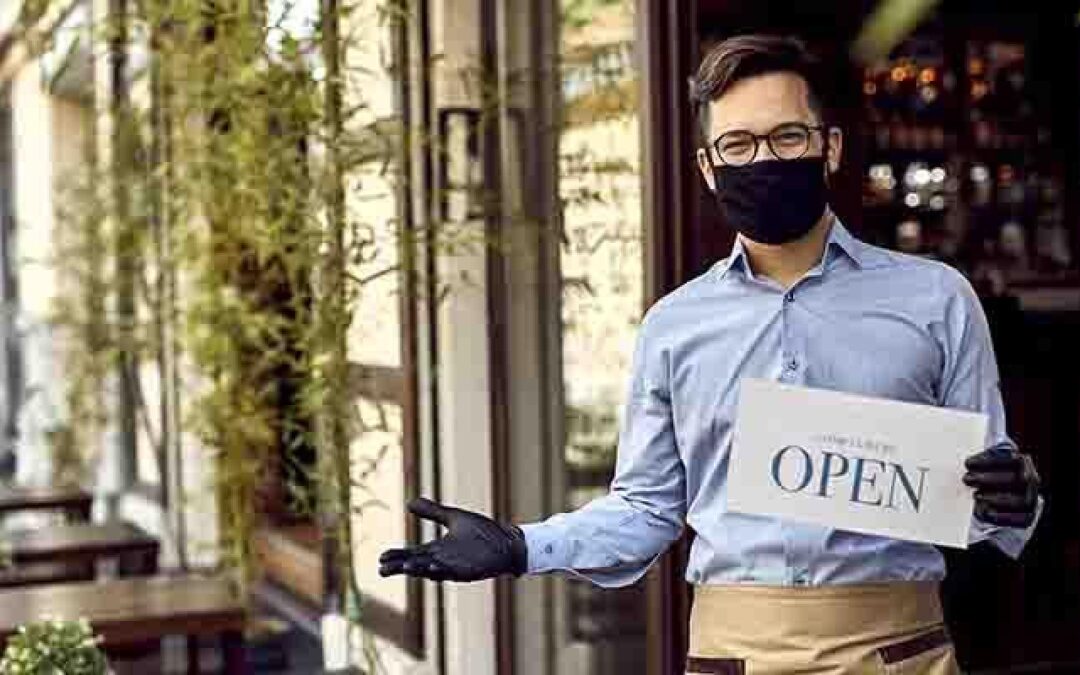One of the hardest-hit industries during the COVID-19 pandemic has been restaurants, with shutdowns and restrictions cutting off revenue opportunities. The newly passed American Rescue Plan Act (ARPA) aims to help restaurants, bars and related businesses with a new grant program called the Restaurant Revitalization Fund (RRF).
The RRF will offer $28.6 billion in grants to hard-hit restaurants and bars, with restaurants able to apply for grants based on lost revenue. Additionally, $5 billion of that total will be set aside expressly for businesses with 2019 gross receipts of less than $500,000.
Who is eligible for RRF grants?
Most American restaurants and bars that lost revenue in 2020 versus 2019 will be eligible to apply for RRF grants, including restaurants, food stands, food trucks, food carts, caterers, saloons, inns, taverns, bars, lounges, brewpubs, tasting rooms, taprooms, licensed facilities or premises of a beverage alcohol producer where the public may taste, sample, or purchase products.
However, any restaurant or bar that is part of a publicly-traded company or owned by a state or local government is not eligible to apply. Also, owners that operate more than 20 restaurants are ineligible. Notably, if you are the owner of a franchise and you do not control more than 20 locations, you are likely eligible to apply.
How and when can I apply?
The Small Business Administration (SBA) will administer and disperse the RRF grants. To apply, businesses will need to either need to go through point-of-sale (POS) restaurant partners including Clover, NCR Corporation, Square and Toast, or they can apply directly through the SBA using an application portal. The designated POS partners will be offering their customers an integrated application experience; assistance with documentation, and instructive webinars aiming to “accelerate” the application process. No date has been set for the SBA online application portal launch as of mid-April 2021, but the application portal is available here.
Applicants will need to collect and submit documentation to show how COVID has impacted their business. Documentation will include tax information verification with the submission of a signed IRS Form 4506-T. Businesses may submit the following documents to prove gross receipts:
- Business tax returns (IRS Form 1120 or IRS 1120-S)
- IRS Forms 1040 Schedule C; IRS Forms 1040 Schedule F
- For a partnership: partnership’s IRS Form 1065 (including K-1s)
- Bank statements
- Externally or internally prepared financial statements such as income statements or profit and loss statements
- Point-of-sale report(s), including IRS Form 1099-K
Those interested in obtaining RRF grants should keep a close eye on the SBA’s Restaurant Revitalization Fund website for more details. They can also read over the SBA’s sample application to better know the paperwork and information they need to apply.
How much can I get from the grant program?
Restaurants can apply for grants that are equal to 2020 gross revenue, minus 2019 gross revenue, minus PPP loan amounts. For businesses in operation for all of 2019 and 2020, the maximum grant size will be $5 million for restaurants and $10 million for restaurant groups. Grant funds will not be taxed like income.
If a restaurant was not operating for all of 2019, the maximum grant value is the average monthly gross receipts in 2020, minus the average monthly gross receipts in 2019, minus PPP loan amounts. If a restaurant was not in operation for all of 2020, it could potentially receive a grant that totals the amount of “eligible expenses” between February 15, 2020, and March 11, 2021 minus 2020 gross receipts minus PPP loan amounts.
The minimum amount an RRF grant can be is $1,000.
What can grant funds be used for?
RRF grants can be used on specific expenses, including:
- Payroll costs.
- Payments of principal or interest on any mortgage obligation.
- Rent payments, including rent under a lease agreement.
- Maintenance, including new outdoor seating construction.
- Supplies, including PPE and cleaning materials.
- Food and beverage inventory.
- Covered supplier costs.
- Operational expenses.
- Paid sick leave.
- Any other expense SBA says is essential to maintain operations.
The “covered period” for what expenses can be paid by the grant must be incurred between February 15, 2020 to December 31, 2021.
If you think you may qualify for a RRF loan, please contact S&K to learn more about this important program.

